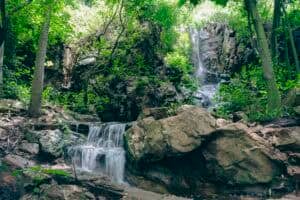But the farmers are not happy.

The hunt is on for the search for natural gas on the doorstep of eMalahleni in Mpumalanga, reports the Witbank News.
The department of minerals and energy has given the go-ahead for exploring for coal bed methane and natural gas on two farms close to the city.
Farms Leeuwpoort and Driefontein have been identified for the exploration. Wimpie Glover, owner of Leeuwpoort Koelkamers said he would fight the matter in court.
“I am not going to allow them to drill on my farm. I sell fresh borehole water and their explorations will have a negative effect on my borehole water,” Glover said.
He said he drilled 200 metres deep for borehole water and came across natural stone called blue granite.
“I can tell them now there is no gas on my farm,” Glover said.
Another farmer who is worried about the drinking water is Frik van Dyk from portion 23, 75 and 30 Leeuwpoort.
“We do not have a reserve of underground water we can rely on. Our underground water runs through veins into our boreholes. Our biggest concern is that once the drillings starts the underground water will siphon away to the lowest point leaving our boreholes bone-dry,” Van Dyk said.
“The whole farming community in the area is dependent on underground water.
“Should they start drilling and contaminate the water, it will have devastating effects on our crops and cattle.”
According to Nkululeko Harold Louw, executive director and chairperson of Corecode, whose application for an exploration right was accepted by the Petroleum Agency of South Africa, gas exploration is more environmentally friendly than coal exploration.
Louw explained that this project will take three years.
The exploration will be conducted in two phases. The first called the desktop phase and the second the drilling phase.
In the desktop phase, target sites for potential exploration drilling will be identified. Existing geological data in and around the area, geological field mapping and computer modelling of all the available data will be gathered. Ten geological core boreholes will be drilled at predetermined positions. The borehole cores will be logged, sampled and analysed by a coal bed methane laboratory.
In the second phase, further field mapping will be undertaken to plan an additional 10 geological infill boreholes and to plan the geophysical survey if required. The geophysical survey is required to determine if there are igneous intrusions, dykes and what their positions are.
The 10 geological borehole cores will be logged, sampled, analysed and rehabilitated.
Rounding this project off, a feasibility evaluation will be done.
Louw said, “There are tell tale signs that gas might be present in the burning coal on Farm Driefontein, limestone and sandstone.”
Although the farmers do not have mineral rights on their farms, Glover is prepared to take the legal route.
“I have consulted with my lawyer. I will not sit back and let my farm be exploited,” Glover said.
– Caxton News Service
//
For more news your way, follow The Citizen on Facebook and Twitter.






